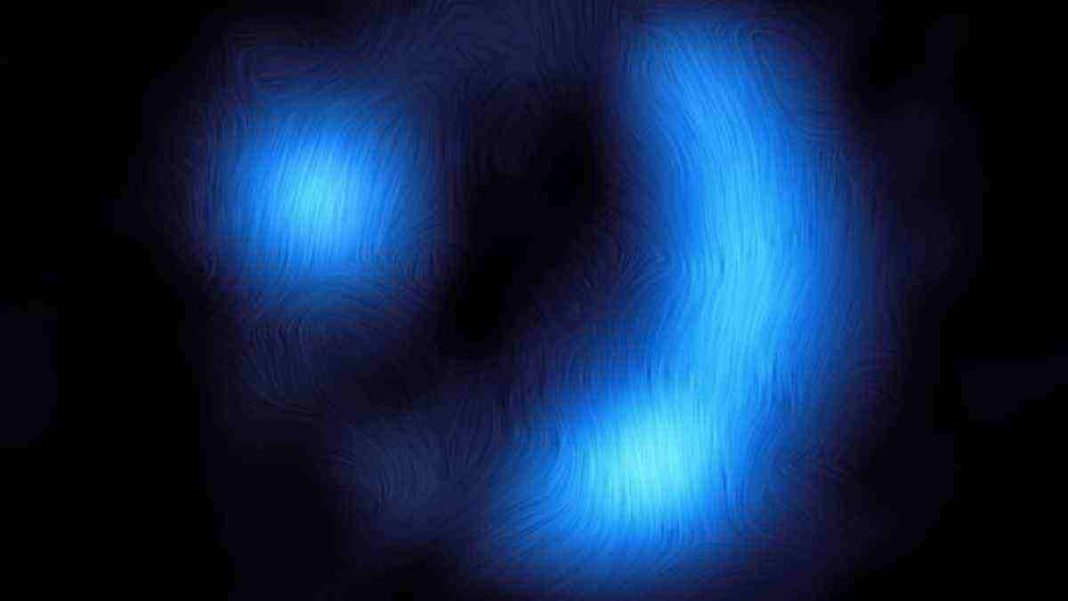CHILE: Astronomers have peered across billions of years of space and time to detect the magnetic field of a galaxy so distant that its light has traveled more than 11 billion years to reach us.
This extraordinary achievement was made possible by the Atacama Large Millimeter/submillimeter Array (ALMA), a powerful telescope array located high in the Chilean desert.
The galaxy in question, known as 9io9, appears to us as it was when the Universe was a mere 2.5 billion years old, providing a mesmerizing glimpse into the cosmic past. This discovery is set to shed crucial light on how magnetic fields in galaxies, including our own Milky Way, formed and evolved over eons.
“Magnetic fields are woven into the fabric of the Universe, spanning vast distances that can extend for tens of thousands of light-years within galaxies,” explains James Geach, a leading astrophysicist from the University of Hertfordshire in the UK and the lead author of the study published today in the journal Nature.
Geach adds, “We actually know very little about how these fields form, despite their being quite fundamental to how galaxies evolve.”
Up until now, our knowledge of galactic magnetic fields has been largely confined to those in close proximity to us. The mystery of when and how these magnetic fields originate remained elusive. But with ALMA’s exceptional capabilities, Geach and his team have unraveled a revelation that promises to reshape our understanding of these cosmic features.
The magnetic field discovered in galaxy 9io9 is a fully formed structure, akin in pattern to what we observe in nearby galaxies. While it is approximately 1000 times weaker than Earth’s magnetic field, it astonishingly spans a distance exceeding 16,000 light-years.
This revelation challenges our previous assumptions about the gradual formation of such fields and indicates that they can develop rapidly during the early stages of a galaxy’s existence.
Astronomers speculate that the intense star formation that characterized the early Universe may have played a pivotal role in expediting the development of these magnetic fields.
Furthermore, these magnetic fields could exert significant influence over the formation of subsequent generations of stars, shaping the very composition of galaxies.
Co-author and ESO (European Southern Observatory) astronomer Rob Ivison emphasizes that this discovery opens a “new window onto the inner workings of galaxies,” as magnetic fields are intrinsically linked to the materials responsible for birthing new stars.
The groundbreaking detection was made possible by searching for light emitted by dust grains within galaxy 9io9. In the presence of a magnetic field, these dust grains tend to align themselves, causing the emitted light to become polarized. This polarization, where light waves oscillate in a preferred direction rather than randomly, served as the telltale sign of the distant galaxy’s magnetic field.
James Geach acknowledges that this milestone would have been impossible without ALMA’s unmatched capabilities, stating, “No other telescope could have achieved this.”
Also Read: European Space Agency Astronomers Find a Novel Way to Detect Ancient Universe Features



